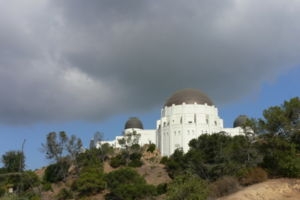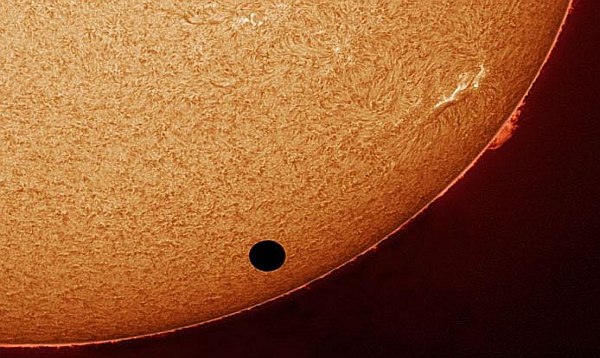Los Angeles ó Itís a spectacle that wonít repeat itself for another century ó the sight of Venus slowly inching across the face of the sun. Unless scientists discover the fountain of youth, none of us will ever witness this celestial phenomenon again.
The event, dubbed "transit of Venus," is so unique that museums, national parks, and schools around the globe are hosting Venus viewing festivities. Even astronauts aboard the International Space Station plan to make time to observe the event.
On Tuesday afternoon from the Western Hemisphere, Venus will appear as a small black dot gliding from left to right across the disk of the sun. The entire transit, lasting 6 hours and 40 minutes, will be visible from the western Pacific, eastern Asia, and eastern Australia. The event will happen on Wednesday morning for the Eastern Hemisphere.
Skywatchers in the United States, Canada, Mexico, Central America, and the northern part of South America will see the beginning of the show in the hours leading up to sun set. Europe, western and central Asia, eastern Africa, and western Australia will catch the tail end after sunrise. Those who donít want to leave their homes can follow live webcasts by NASA and various observatories.
"Anything silhouetted on the sun looks interesting. Seeing Venus is extremely rare," said astronomer Anthony Cook of the Griffith Observatory in Los Angeles.
Perched on the south slope of Mount Hollywood, the observatory is preparing for heavy traffic Tuesday afternoon, as large crowds are expected to show up to peer through telescopes with special filters that are set up on the lawn.
Skygazers who want the full experience are flocking to Hawaii, considered one of the prime viewing spots since the whole transit will be visible. From the world-famous Waikiki Beach on Oahu to the summit of Mauna Kea on the Big Island, eclipse glasses will be passed out so that people can safely see Venus crossing without damaging their eyes.
"Just remember to have patience; thereís no one big climatic moment. It takes longer to happen than a solar or lunar eclipse," said Larry OíHanlon, who does outreach at the W.M. Keck Observatory on the big island.
 |
| Griffith Observatory in Los Angeles |
The second planet from the sun between Mercury and Earth, Venus is about the same size as Earth. It appears as one of the brightest objects in the night sky because its thick clouds reflect much of the sunlight back into space.
"You'd have to know itís happening," said David DeVorkin, a senior curator at the Smithsonianís National Air and Space Museum. "There'll be no obvious change to the brightness of the sky during the event, as Venus only blocks out a tiny piece of the sun.
Venus is the third celestial show to grace the sky in less than a month. Just a day earlier, a partial lunar eclipse will be visible from western North America, South America, Australia, and eastern Asia. And there was the much-hyped "ring of fire" solar eclipse on May 20th.
Unlike eclipses, Venus transits are truly rare. They come in pairs, separated by more than 100 years. The last one occurred in 2004 and next pair in 2117 and 2125.
Since the German astronomer Johannes Kepler first predicted it in the 17th century, only six have been observed. The upcoming one will be the seventh.
Only two people were said to have seen the transit of 1639. The 1882 transit was a bigger deal ó people jammed the sidewalks of New York City and paid 10 cents to peek through a telescope. John Philip Sousa even composed a score called "Transit of Venus March."
The one in 2004 was viewed by millions ó in person and online.
The early Venus viewings were a big deal to scientists who used the alignment to measure the size of our solar system.
Knowing it was so rare, scientists from countries around the world sent out ships to time how long it took Venus to move from one edge of the sun to the other. It was from this data that they were able to calculate the distance from the earth to the sun.
The technique is still used today to search for alien worlds outside our solar system.
To view transit details, check out: eclipse.gsfc.nasa.gov/OH/transit12.html.
Source: LA Times


